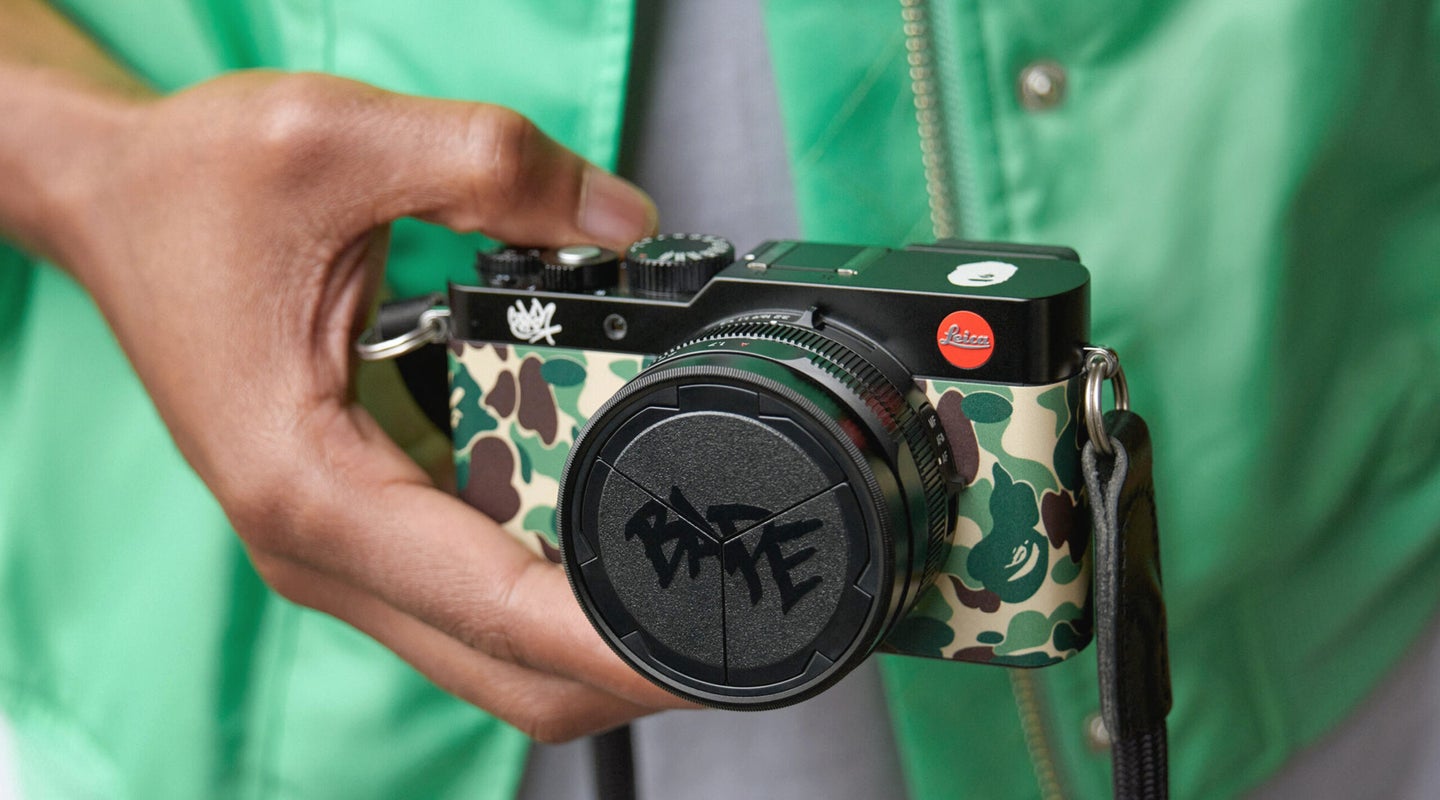Leica’s latest ‘drop’ may be the world’s trendiest camera
Leica teamed up with Japanese streetwear brand, BAPE, and legendary NYC graffiti artist, STASH for this limited-edition release.

If you’re in the market for a super-trendy camera, Leica has you covered with its latest release. The Leica D-Lux 7 A BATHING APE (BAPE) x STASH collaboration combines streetwear, graffiti, and photography all into one admittedly dope-looking package, let’s dig in.
Related: You’ll need a goldfinger to afford the new Leica Q2 ‘007’ edition
What’s the deal with BAPE & STASH?

If you’re more a photo nerd than a fashionista, you might not be familiar with the Japanese streetwear brand, A BATHING APE (BAPE). Founded in 1993 in the heart of Tokyo, BAPE has grown from a cult brand to a major player in the fashion world, in just a few short decades. And today, you can find everyone from hip hop stars to athletes to contemporary artists rocking BAPE.
STASH, on the other hand—real name Josh Frankin—is one of NYC’s most iconic graffiti artists and designers, whose work dates back to the 1980s.
Why did Leica collab with BAPE & STASH?

Marketing, of course! The world loves limited edition “drops,” especially ones that manage to include multiple respected players. Furthermore, Leica has not been shy about its intentions to reach a younger audience. And these kinds of mashups are potentially the perfect way to entice younger photographers to go Leica. Also, it’s just plain cool.
“There is a very thin border between the pleasure of taking pictures with the camera and the pleasure of owning a beautiful object, the camera itself,” says Andrea Pacella, director of global marketing and communications at Leica Camera AG.
The Leica X BAPE x STASH

Under the hood, the Leica D-Lux 7 BAPE x STASH is just like any other Leica D-Lux 7, which itself is based on 2018’s Panasonic LX100 II. Priced at $2,190, the collaboration camera is just shy of $800 pricier than a standard D-Lux 7 and nearly $1200 more than the LX100 II. All three of these models are essentially identical in terms of spec, design, and capability, so what does the extra cash get you?
For one, bragging rights. Only 1000 Leica x BAPE x STASH cameras will be made, including 750 in black, to be sold at Leica stores, and 250 in silver, to be sold at BAPE stores. In addition, you get a camera decked out in an awesome green/tan/brown graffiti print, complete with STASH’s signature on the front, and BAPE’s famous monkey head logo on top, in addition to other limited-edition details.

The camera also ships with a really nice-looking, custom strap and carrying bag.
Is this even a good camera?
At four years old, it’s safe to say the D-Lux 7 is a tad long in the tooth. Still, the camera’s petite size, Four Thirds sensor, and 24-75mm equivalent zoom range make it an enticing option for daytime street photography. And there’s even a hotshoe, should you want to mount a flash. Ultimately, though, while it is a capable little camera, there are quite a few more capable options out there for the cash (though few as compact).
Availability
To get your hands on Leica D-Lux 7 BAPE x STASH collab, you’ll have to make your way to one of several select Leica and/or BAPE stores and spend a cool $2,190. The camera will not be available online.
